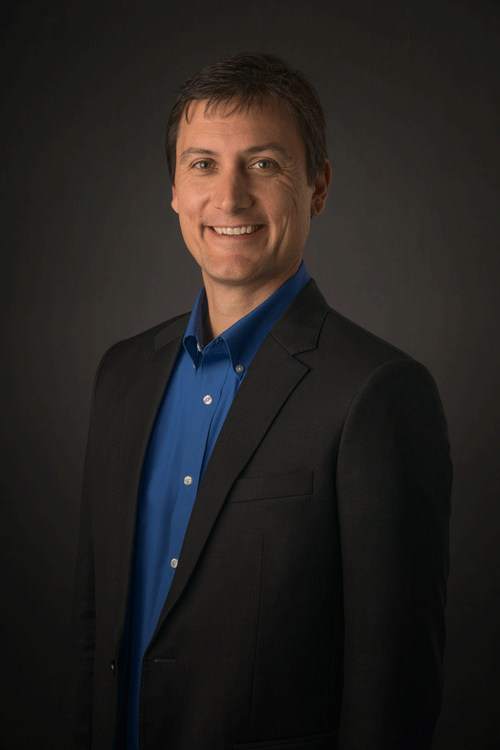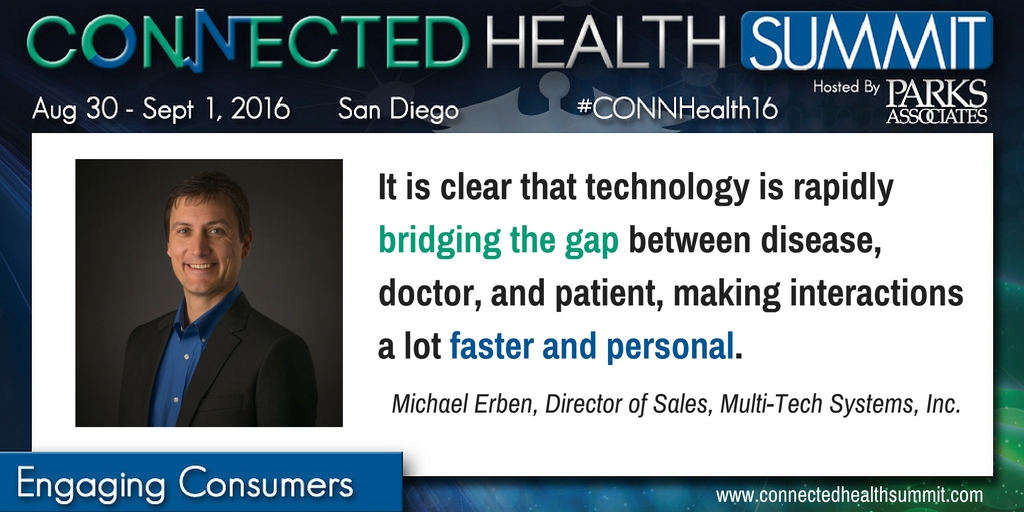 Prior to joining the speaker line-up at the third-annual Connected Health Summit August 30-September 1, Michael Erben, Director of Sales at Multi-Tech Systems, Inc., shares his insight on key trends in connected health:
Prior to joining the speaker line-up at the third-annual Connected Health Summit August 30-September 1, Michael Erben, Director of Sales at Multi-Tech Systems, Inc., shares his insight on key trends in connected health:
What’s new in 2016 that keeps you upbeat/optimistic about the connected health market?
The world of medical devices and the way in which deliver care is going through a tremendous change that will only accelerate as the sociopolitical and technology turmoil unravels. Some of the factors affecting how fast we experience change in this industry are exemplified by the following:
- Pace of technology innovation in materials, analytics and electronic components
- Demographics and cultural shift. Babyboomers retiring and in need for services is just one element of the equation.
- The other component is the arrival of millennials to the workforce with an expectation of how technology should be used to execute work related tasks. For example, this is revolutionizing the way we perceive cars which are destined to become self-driven and turned into an extension of a home office. If that’s the case, is it naive to believe it could be something more? Why not add basic sensors that can measure vital signs or signs of fatigue?
What’s the most effective strategy/approach you have seen that engages consumers for health and wellness behavioral changes?
- A Wellness strategy is really a multidimensional approach that addresses multiple factors:
- Ways to stay healthy, How to manage chronic conditions
- The relationship between physical health and emotional well-being
- Products, programs and services that will help engage patients and improve their health
- Etc.
In general, this can be divided into two main sections: Prevention and management. Now, there is definitely a strong correlation between behavior and health status. We all have different pre-conceptions of a healthy lifestyle and that is indeed a challenge to influence. So, an effective strategy has to be easy to adopt into our daily lives, personal and meaningful in the sense we are getting access to progress showing improved performance. The best approaches we have witnessed are well integrated and combine data analytics with communications through smart devices with patients and physicians. In most situations, the medical device company offers the actual product delivering treatment, the analytics platform and assistance with insurance and payment (Medtronic).
A good example is smart glucose meters which have become portable and predictive devices delivering insulin treatment automatically. The device is also paired with a free software platform where individual behavior patterns can be identified (eating and activity habits for example) empowering the patient to take action and have close collaboration with his/her doctor.
What do you anticipate to happen in 2017-2018 that would have the biggest impact on the connected health market?
We expect ongoing developments in RF technology and miniaturization of sensors which conjunctively will create personal networks with ubiquitous wireless access to the internet. It is what we know as Wireless Body Area Networks.
It is clear that technology is rapidly bridging the gap between disease, doctor and patient making interactions a lot faster and personal. We are seeing sensors now able to be concealed and non-intrusive to our personal lifestyles. Miniature medical devices that are capable of monitoring chronic conditions such as diabetes and heart disease and are also mobile. For example, Contact lenses that monitor glucose levels, smart pills that monitor body response to medication and heart rate monitor patches.
The advent of WBANs (Wireless Body Area Networks) will only accelerate migration of medical machines from static to mobile. This is also happening inside the hospital where the same concept is being developed to treat critically ill patients and eliminate wires. FCC appointed this year the Enterprise Wireless Alliance to serve as frequency coordinator and manage MBAN registrations by healthcare facilities. This is a very important step forward after exclusive spectrum was allocated in 2012 (2360 to 2400MHz).

Michael will speak on the panel "Sensors and IoT Technologies for Connected Care" with ARM and Sigma Designs/Z-Wave on September 1 at 10:45am.
Registration for the Connected Health Summit is open! Reserve your seat today by visiting www.connectedhealthsummit.com.


